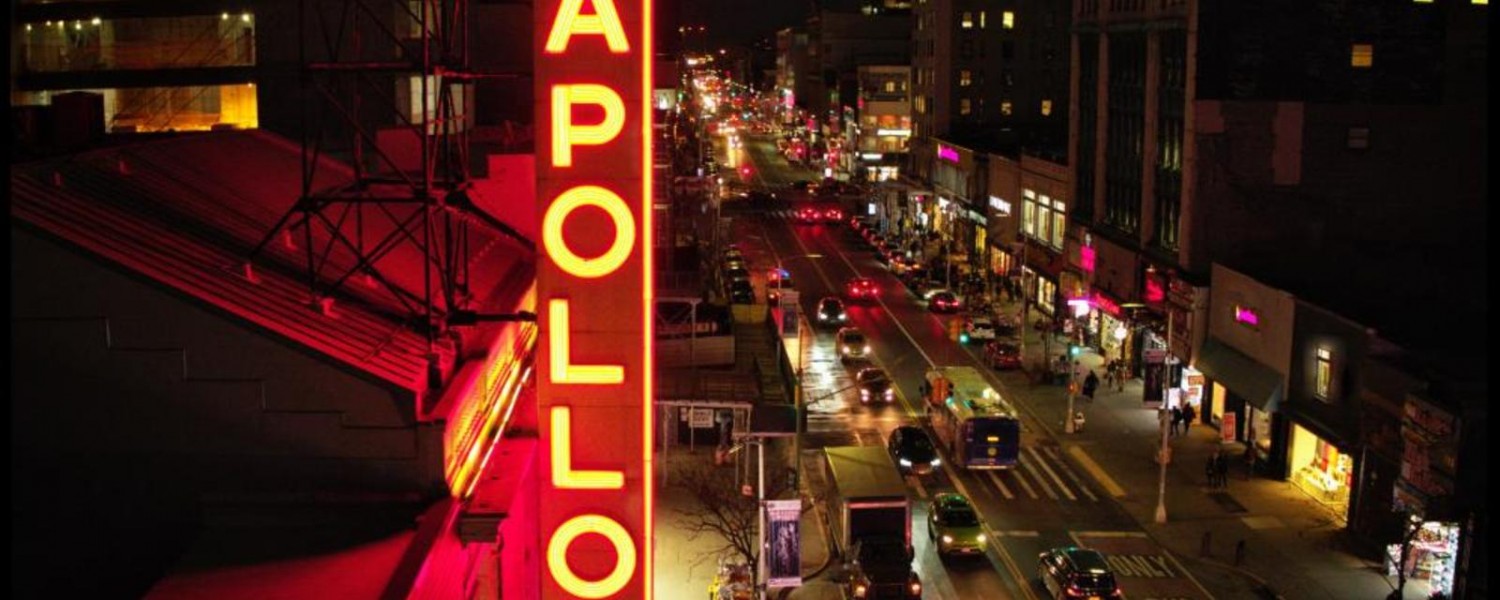The legend of Harlem's Apollo Theater

In the earliest days of the Apollo Theater, an unknown and nervous 17-year-old girl got on stage on amateur night. She forgot the song’s lyrics, started scatting, and never stopped. Her name, it turns out, was Ella Fitzgerald.
A middle-aged Fitzgerald recalls this moment in Roger Ross Williams’ new documentary about the legendary Harlem theatre. The HBO documentary, due to be in the autumn, is packed with old film and photographs, as well as new interviews, spanning an incredible range. Snippets of legendary musicians on stage run chronologically through the decades, from Duke Ellington and Billie Holliday in the ’30’s, through James Brown and The Supremes in the ’60’s and ’70’s, on to Public Enemy and Pharrell Williams.
The Apollo Theater has been the heart of black American culture since 1934. At the time, segregated venues like the Cotton Club relied on black performers, but only white people were allowed in the audience. The Apollo was different. When it opened, it opened to everyone. African-American performers, including dancers and comedians, felt at home. Some, like Eartha Kitt, were already famous. Others, like 13-year-old Lauryn Hill, turned up on amateur night, where she did so badly the audience practically booed.
Williams does a terrific job of layering decades of iconic music through the film. A snippet of Ellington and his band might lead to a montage of photographs from the period, but the music from the clip continues over those later images. The result is not wall-to-wall music, but the soundtrack never flags as it runs through the changing musical styles.

The film includes at least as many new and archival interviews as performances. These interviews vividly recreate the experience of performing at the theatre. Leslie Uggams, who started singing there as a young girl, recalls that Dinah Washington kept $100 bills on hand in her dressing room for people who needed help. Aretha Franklin, in a brief interview from later in life, still carps about how little the Apollo paid her early on. Smokey Robinson and Gladys Knight remember how relentlessly they worked, running up and down stairs to cramped dressing rooms between multiple shows a day.
The theatre’s significance grew in the civil rights era. James Brown, sang Say It Loud: I’m Black and I’m Proud there in 1968, and the song became a declaration of the Black pride movement. And the film shows Brown’s casket, visible through glass windows of a horse-drawn carriage, as it travelled to the theatre through crowds on the street for his memorial service in 2006.
By the 1970’s the Apollo had fallen into disrepair and then bankruptcy, its 1,500 seats not enough to sustain it. Today it is run by a foundation, determined to keep it as a vital part of the city. Throughout the film, we see rehearsals and bits of a theatrical reading — with Angela Bassett and Common among the performers — based on Ta-Nehesi Coates’ Between the World and Me, the 2015 best seller that considers what it means to be a black man in an age of racial profiling. That thread works better as evidence of the theatre’s forward-looking mandate than it does as a narrative device.
Another sign of the theatre’s relevance is that the documentary’s premiere, on opening night of the Tribeca Film Festival, took place there. But there is probably no better tribute to the theatre, its music, its audience and its legacy than from President Barack Obama. He begins a speech on stage at the Apollo by singing “I’m so in love with you…. ” the opening line of Al Green’s Let’s Stay Together.

On its own terms, as a celebration of the theatre and its role in American life, the film works as a glossy, entertaining, informative history. But while charting the theatre’s cultural importance, the documentary all but ignores the huge influence that black musicians, from jazz to soul, have had around the world.
It is easy to spot the film’s biggest hole. A clip of the Isley Brothers doing a smooth, polished version of Twist and Shout leads into an interview with Paul McCartney, who recalls how important black American music was to The Beatles. On the group’s first trip to the U.S. in 1964, he says, they wanted to visit the Apollo, but were warned off because the neighbourhood was considered too dangerous. McCartney is followed by a glimpse of John Lennon and the Beatles doing their more raucous version of Twist and Shout.
At that moment, the film plants the seed of a bigger question. Whether you call it influence, borrowing or appropriation — a huge issue in itself — the vast impact of black performers seems undervalued in this film. The Apollo Theater certainly belongs to black America. But even now the ripple effect is felt around the globe, and is too important to be overlooked.
If you liked this story, sign up for the weekly bbc.com features newsletter, called “If You Only Read 6 Things This Week”. A handpicked selection of stories from BBC Music, Culture, Capital, Future and Travel, delivered to your inbox every Friday.
